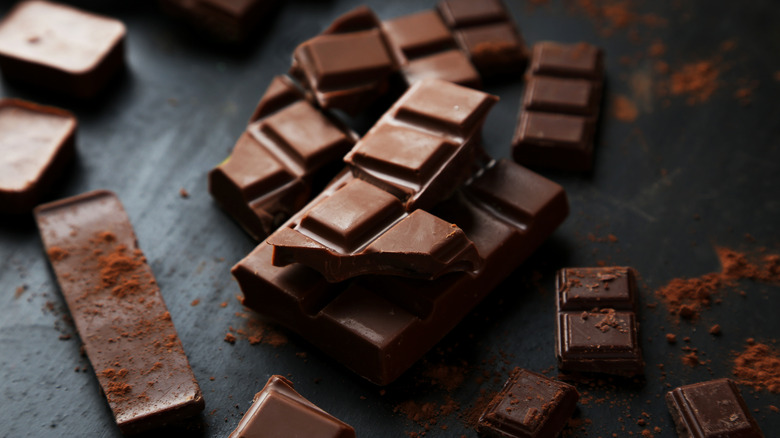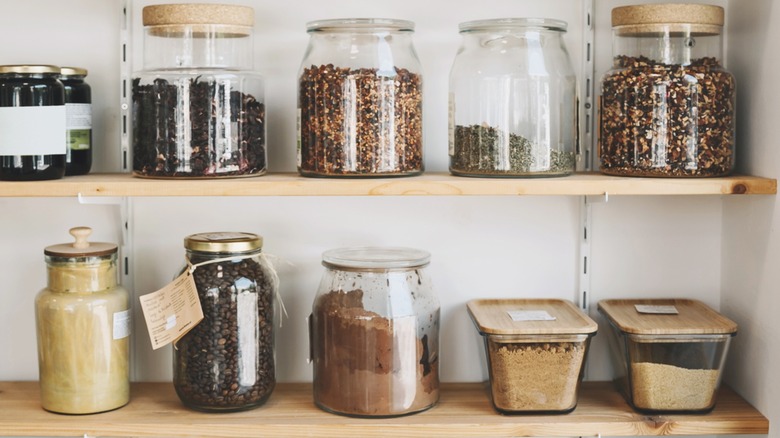Why You Should Store Chocolate Far Away From Your Other Groceries
We may receive a commission on purchases made from links.
If the idea of onion-flavored chocolate repulses you, do yourself a favor and store your chocolate correctly. That includes an airtight container in a cool, dry place like the pantry. It does not include refrigerator storage or a home near pungent foods like onions, garlic, spices, cheese, and coffee (although, coffee-flavored chocolate might not be so bad).
That's because chocolate absorbs the smell and taste of other foods and even strong-smelling household items like candles. The cocoa butter in chocolate is high in fat, which absorbs odors and flavors like a sponge. Regular butter and dairy products are also prone to absorbing the essence of other foods due to their high fat content, so it stands to reason. Whether you have a stash for emergencies or enjoy baking with chocolate and leveraging pro baker tips for exciting chocolate chip cookies, following proper storage tips can keep your chocolate as flavorful as it was the day you brought it home — and not a whiff more.
Important tips for storing chocolate
Storing chocolate in an airtight container keeps odors out while preventing the chocolate from oxidizing. Over time, the antioxidants in cocoa, called polyphenols, oxidize when exposed to air, causing the chocolate to lose its tasty flavor and smell. So use airtight containers like the Chef's Path food storage boxes or the Viretec airtight storage container with easy-pour spout and measuring cup, perfect for chocolate chips and morsels.
Keep your chocolate in a location that's around 65 to 70 degrees Fahrenheit with less than 50% humidity and away from light. With numbers like that, the refrigerator is both too cold and too humid, which can cause chocolate to develop sugar bloom. That's what happens when the sugar dissolves and comes to the surface after being brought to room temperature. Conversely, when chocolate is stored somewhere too warm, the cocoa butter separates and rises to the surface, creating white streaks or dots referred to as fat bloom. The chocolate is still safe to eat when bloom is present, but the appearance and texture may be off-putting.
When stored properly, solid milk chocolate lasts for over one year. Darker chocolates can last even longer, though filled candies may only make it a few months.

